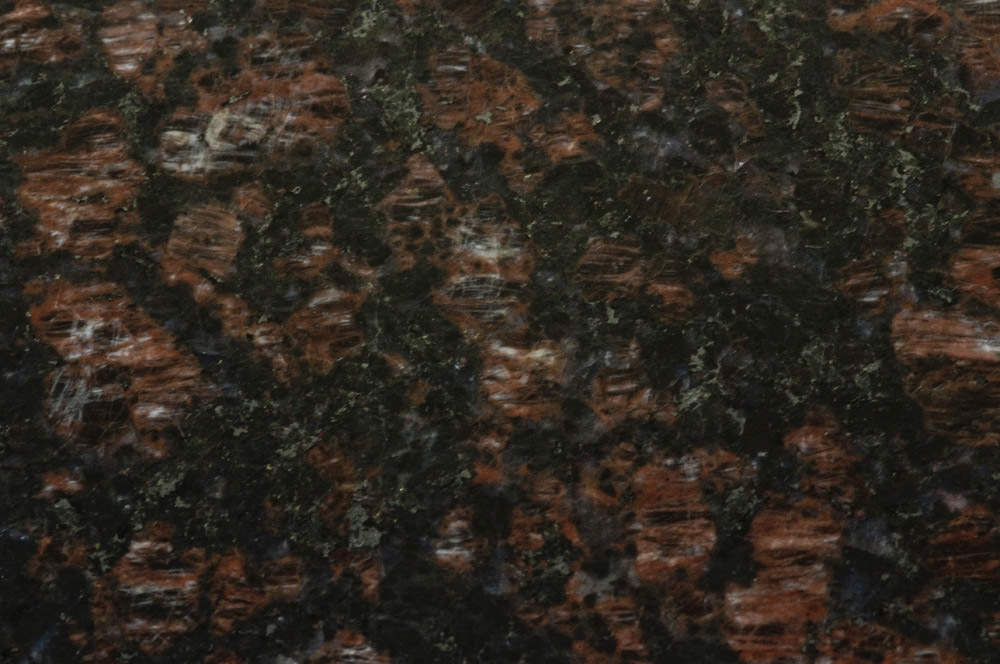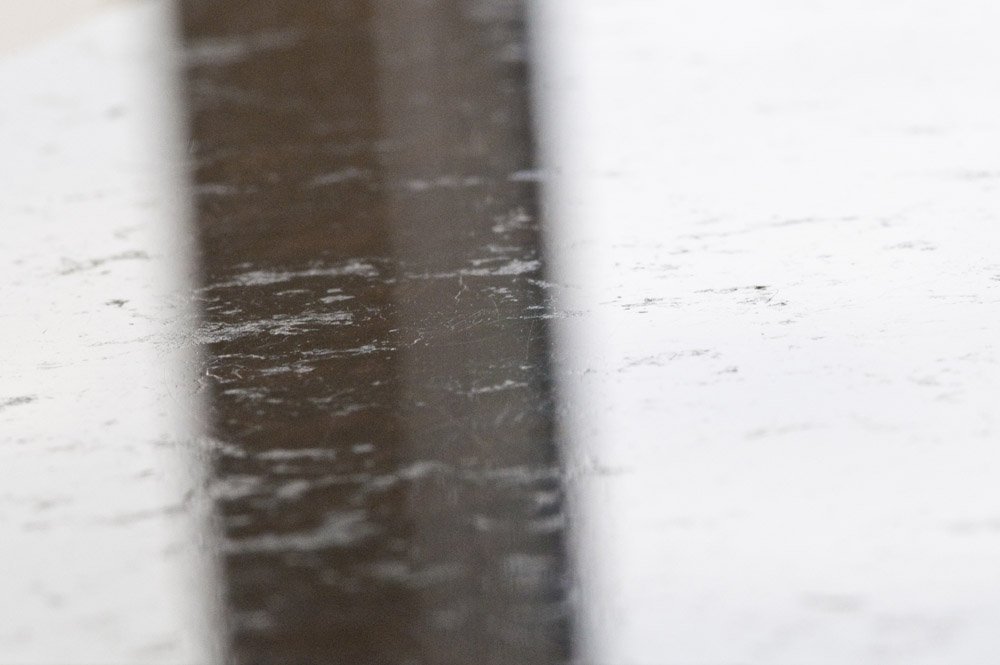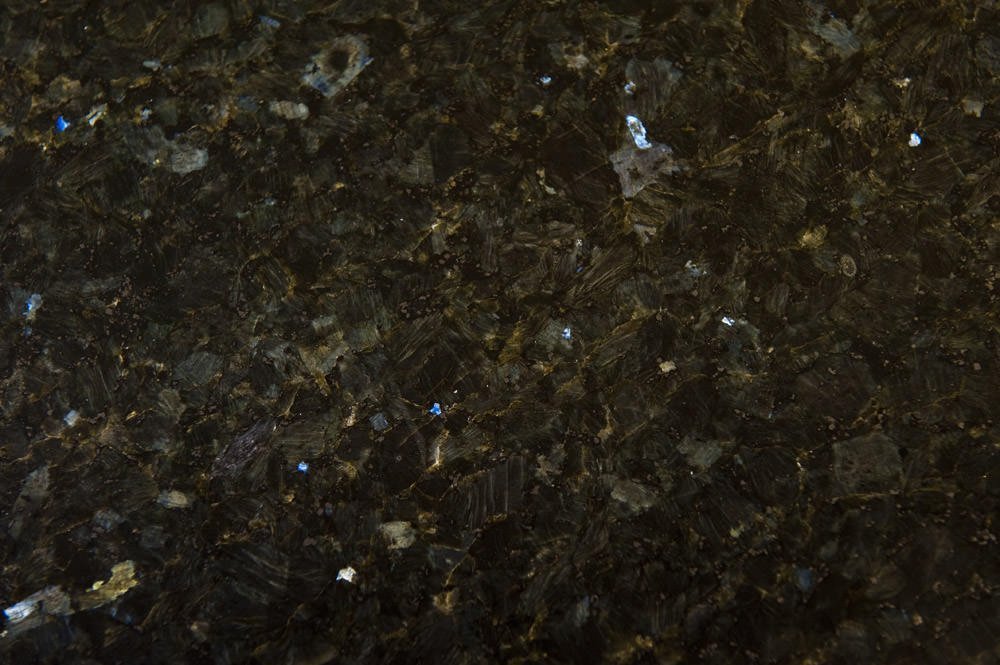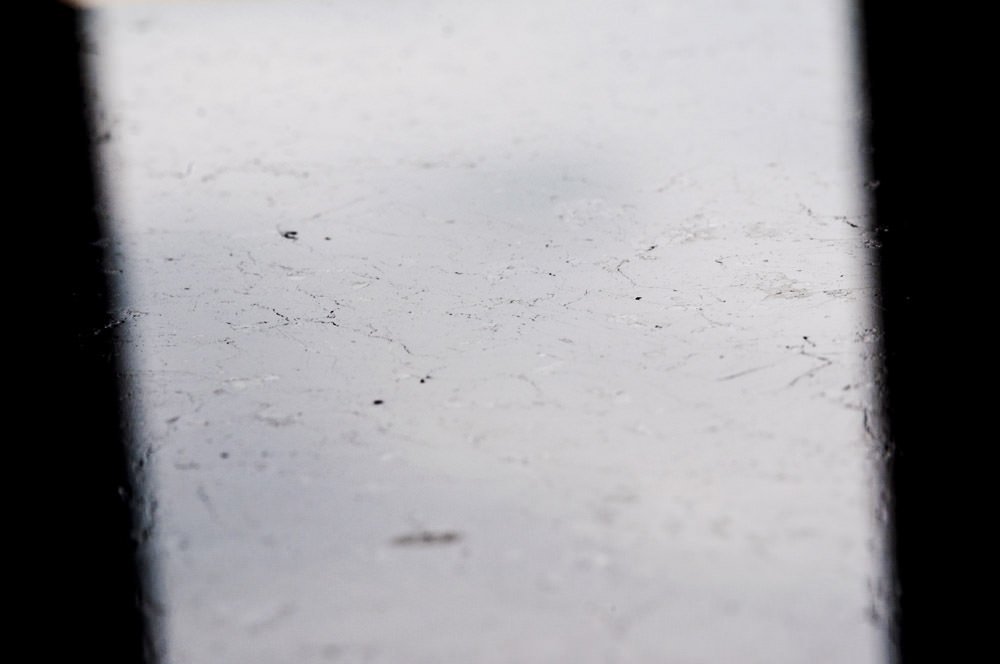A perennial issue in our industry is the potential gap between customer expectation of the appearance of their worktops, and the irregularities and surface textures that are intrinsic and normal characteristics of different natural stones. Sometimes customers expect a polish which is glassy smooth, like a mirror, with no evidence of cracks or indentations at all, and this is simply not realistic.
The term Commercial Granite covers a wide range of rocks which share in common a good degree of hardness and resistance to water infiltration. These characteristics make them suitable as kitchen worktops. Most of the darker stones are truly igneous rocks, formed by the intense heat of volcanic action, liquefying material deep in the Earth before allowing it to cool and solidify to become the rock we know. The lighter stones are often metamorphic rocks – more open textured sandstones heat- and pressure-treated under the earth’s crust to form wild-patterned rocks of extraordinary beauty.
All these rocks have a crystalline, granular structure, with a range of colours depending on their specific mineral content – the proportions of quartz, different types of feldspar and mica all affect the colour. A wide range of stones is available to suit all tastes and creative applications, from highly uniform grain structures and colours to multicoloured stones with veins or movement resulting from the uneven distribution of minerals. “Consistency”, when applied to natural stone, is a term of relative value that needs to be understood in the context of the origins and composition of each product.
Pitting and fissures
When a stone is polished along one plane, pitting and fissuring is inevitable. Because the multiple crystals are oriented in different directions, the interstices between the crystals always show some sign where the polishing plane has cut through the natural breakage lines. Sometimes, due to the heating and cooling of the rock after its formation, these fissures are more obvious than others, but they are rarely completely absent. The pits are in effect tiny spaces between the various mineral crystals; they do not represent structural defects in the stone. Occasionally whole crystals may break out of the surface during polishing, and various techniques are used to mimimise the frequency and effects of this.
Pits and fissures form part of the unique characteristics of each natural stone, and do not impair the durability or beauty of the product. They are not especially associated with porosity or staining issues; Black Galaxy is particularly prone to pitting, for instance, but has very low stain risk.
With both pitting and fissuring, visibility of the features depends very much on angle of view and of the incident lighting. Many granite worktop owners have their worktops for many years and never even notice these elements of the surface appearance. In fact, it tends to be only in windowsills, which may well be viewed at a very low angle and with strong backlight, that they are visible at all. The two highly magnified examples shown here are both taken at very shallow angles, with the light of a bright, cloudy sky as a background. This is not a very natural way to look at your worktops!
We are happy to discuss the surface characteristics of any stone that interests you. Just occasionally a customer chooses their stone precisely to minimise fissuring or pitting. In one case in 2013, a local couple chose Antique Brown instead of Coffee Brown because the larger native crystal sizes in the rock make for a more glassy surface. But they had a massive windowsill, set at a relatively high level, and catching the afternoon sun; for them, glassiness was a critical issue. I cannot think of any other case in which natural surface irregularity has been a significant factor in colour choice, or has affected the customer’s enjoyment of their worktops.
Coffee Brown granite – view down onto surface
Coffee Brown Granite – shallow angle of view, highly magnified, with backlighting. The darker stripe is the reflection of our office door post, which helps to highlight the fissuring as it picks up the light from either side.
Emerald Pearl Granite – view down onto surface
Emerald Pearl Granite – magnified view at shallow angle to show fissures and pitting.




